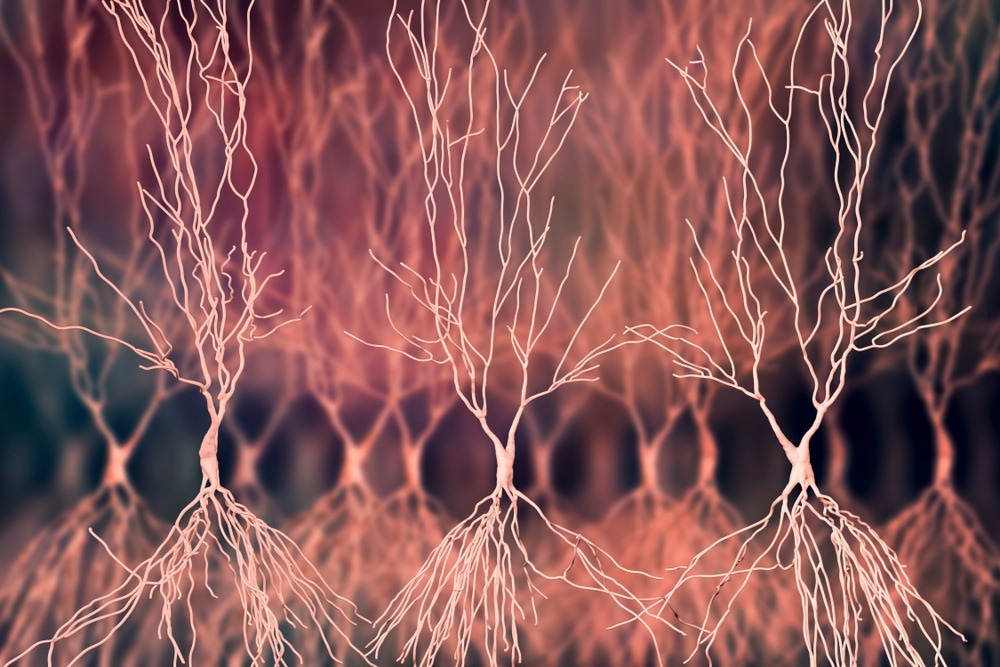Intracellular processes in a biological system rely on temperature. Measuring the temperature gradients at the localized subcellular level is fundamental for a deeper understanding of cell functions. However, detecting temperature variations at the subcellular level remains a challenge.

Study: Nanodiamond–Quantum Sensors Reveal Temperature Variation Associated to Hippocampal Neurons Firing. Image Credit: Kateryna Kon/Shutterstock.com
An article published in the journal Advanced Science discussed the potentiation and inhibition of neuronal firing associated temperature variations for the first time, using a nanoscale thermometer that relies on magnetic resonance, which is optically detected in nanodiamonds.
The results demonstrated that nanodiamond nitrogen-vacancy centers help monitor different temperature variations by assessing different levels of neuronal spiking activity. This neuronal spiking is associated with hippocampal neuron spontaneous firing, silencing of the network, and disinhibition of gamma-aminobutyric acid (GABA)-based transmission.
In the present work, nanodiamonds help study the localized temperature gradients systematically under pathological and physiological conditions.
Applications of Nanodiamonds in Cellular Physiology
Neuronal activities are essential for the proper formation of neuronal circuits, affecting developmental processes like neurogenesis, migration, cellular differentiation, programmed cell death, formation of local and long-range axonal connections, myelination, and synaptic plasticity.
Temperature significantly influences neuronal function and synaptic integration. Changing temperature can affect neuronal physiology in various ways depending on how it affects different cell ion channel complement members. Temperature’s effects on neuronal function are critical for pathological states such as fever, which can trigger seizure activity but are also important in interpreting and comparing experiments conducted at room vs. physiological temperature.
Nanodiamonds are a new class of carbon nanomaterials with unique properties like stable fluorescence, facile functionalization, intrinsic biocompatibility, and other basic properties of bulk diamonds. Since the first synthesis of nanodiamonds in the 1960s, many studies of nanodiamonds have been reported.
Applications of nanodiamonds with different sizes and morphologies include lubrication, bioimaging, energy storage, catalysis, drug delivery biosensor, and photodevices.
Nanodiamonds have excellent mechanical and optical properties, high surface areas, and tunable surface structures. They are also non-toxic, which makes them suitable for biomedical applications. The nitrogen-vacancy centers in nanodiamonds along with the optically detected magnetic resonance (ODMR) technique, have special importance in thermometry for biomedical applications.
However, the ODMR technique requires the test sample’s microwave irradiation, making the technique more complex and necessitating an awareness of the microwave and optical power in providing the required sensitivity without causing any damage to the cells.
Nanodiamond–Quantum Sensors Towards the Detection of Neuronal Activity
In the present study, the correlation between neuronal activity and intracellular temperature variations was quantified for the first time. The sensors based on nitrogen-vacancy centers in nanodiamonds were explored by using ODMR techniques.
The results showed the temperature variation up to 1 degree Celsius relevant to the picrotoxin-induced spontaneous firing of hippocampal neurons, or 0.5-degree Celsius decreased temperature relating to tetrodotoxin and cadmium chloride solution-induced silencing of neuronal activity. Thus, confirming the relation between temperature and cellular activity.
The picrotoxin-induced disinhibition altered cell excitability. Furthermore, since the localization of nanodiamonds at the intracellular level or plasma membrane could not be predicted, the increase in action potential firing activity was anticipated to alter the intracellular pathway.
Additionally, reduced network activity caused a decrease in temperature, with the differential temperature (∆T) of (−0.50 ± 0.17) degrees Celsius. This method was suitable to differentiate the basal spontaneous firing rate from fully silenced network activity.
Using confocal microscopy, it was demonstrated that a 5-hour exposure of cells to nanodiamonds was sufficient to facilitate the internalization of nanodiamonds. At the same time, the action potential waveform remained unaffected even after microwave and laser irradiation. This confirmed that the applied protocol based on a nanosensor that exploited the nitrogen-vacancy centers in nanodiamonds could sense temperature preserved ion channel functioning and cell excitability.
Conclusion
To conclude, the temperature gradients at the intracellular level influence metabolic activities, biochemical reactions, and intracellular processes. The intracellular temperature gradient real-time mapping that is activity-driven represents a tool of interest to monitor cellular activities, identify localized signaling, and as a diagnostic tool.
The ODMR technique applied in the present work helped monitor the temperature gradient in hippocampal neurons under different conditions of network excitability. The correlation between temperature increases and altered firing activity in the cultured hippocampal neurons was demonstrated using picrotoxin. The phenomenon was observed using a nanosensor based on nanodiamonds at the single-cell level.
Reference
Petrini, G., Tomagra, G., Bernardi, E., Moreva, E., Traina, P., Marcantoni, A., Picollo, F et al. (2022) Nanodiamond–Quantum Sensors Reveal Temperature Variation Associated to Hippocampal Neurons Firing. Advanced Sciences. https://onlinelibrary.wiley.com/doi/10.1002/advs.202202014
Disclaimer: The views expressed here are those of the author expressed in their private capacity and do not necessarily represent the views of AZoM.com Limited T/A AZoNetwork the owner and operator of this website. This disclaimer forms part of the Terms and conditions of use of this website.